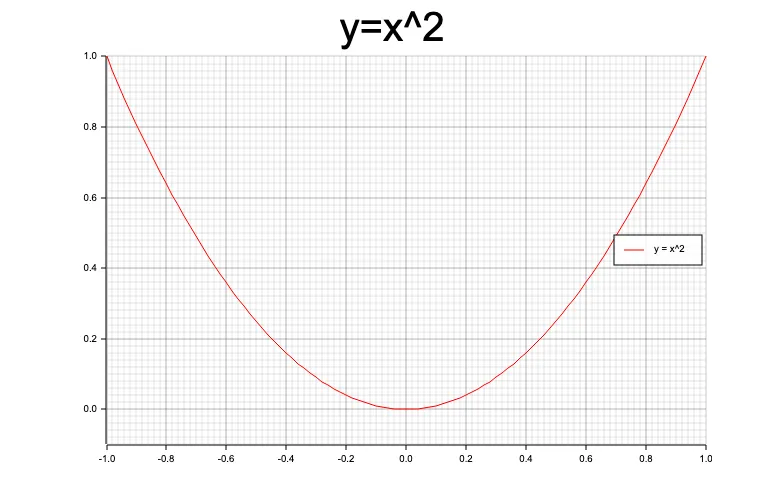Preamble
:dep plotters = { git = "https://github.com/38/plotters", default_features = false, features = ["evcxr", "line_series"] }
extern crate plotters;
use plotters::prelude::*;
use plotters::series::*;
Visualisation
I had originally planned to use Plotters for all the graphing in this book. However, shortly after finding Plotters, I found out that a Rust library had enabled Plotly support. You will see this in later sections, but for now, here is an example of how Plotters works.
let figure = evcxr_figure((640, 480), |root| {
root.fill(&WHITE);
let mut chart = ChartBuilder::on(&root)
.caption("y=x^2", ("Arial", 50).into_font())
.margin(5)
.x_label_area_size(30)
.y_label_area_size(30)
.build_ranged(-1f32..1f32, -0.1f32..1f32)?;
chart.configure_mesh().draw()?;
chart.draw_series(LineSeries::new(
(-50..=50).map(|x| x as f32 / 50.0).map(|x| (x, x * x)),
&RED,
)).unwrap()
.label("y = x^2")
.legend(|(x,y)| PathElement::new(vec![(x,y), (x + 20,y)], &RED));
chart.configure_series_labels()
.background_style(&WHITE.mix(0.8))
.border_style(&BLACK)
.draw()?;
Ok(())
});
figure

